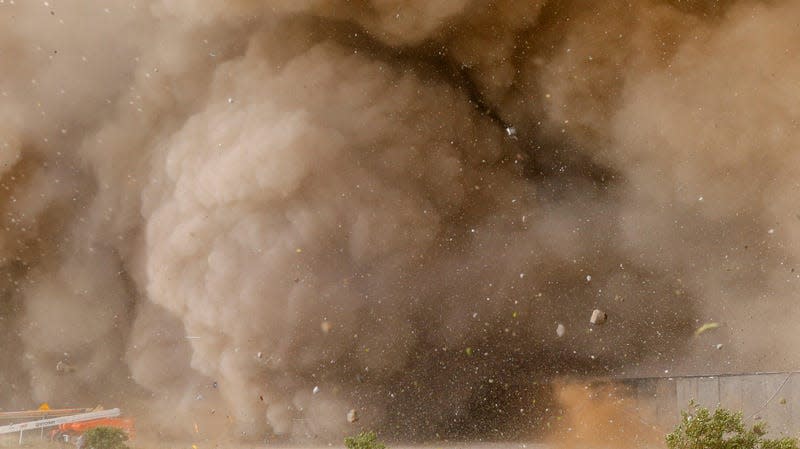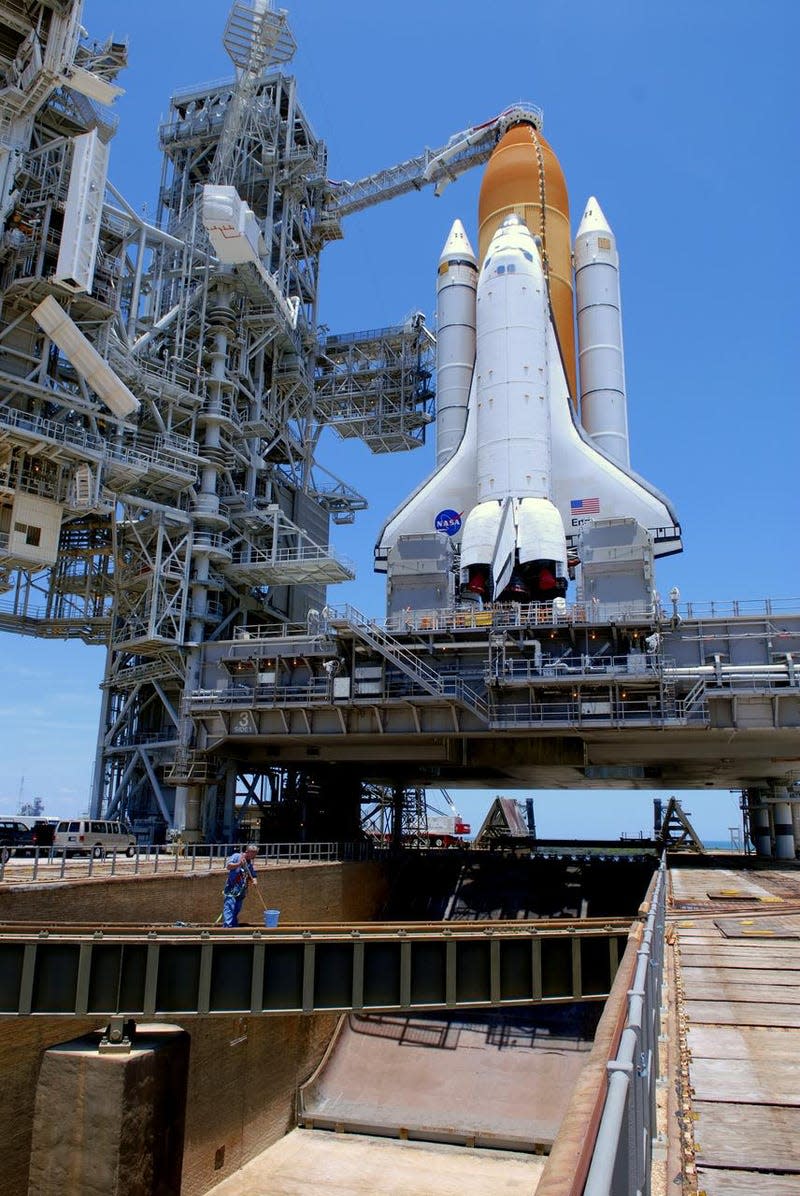The FAA let SpaceX launch Starship without the usual pad protections

Rapid Unexpected Debris.
The multi-year bureaucratic clash over the environmental impact of the world’s largest rocket considered everything from endangered birds and historical monuments to exhaust and construction noise, but the Federal Aviation Administration (FAA) didn’t anticipate one thing: dust.
As SpaceX’s Starship rocket took flight last week in Texas, more than two dozen powerful rocket engines fired at once, pushing the enormous vehicle into space—and blasting away at the launch gantry and the ground below it with more than 6,000 metric tons of force.
Read more
All that energy led ultra-strong concrete at the base of the launch structure to dissolve, hurling chunks of rubble into the ocean and pelting the site where journalists set up remote cameras to capture the event, even punching through a car parked there. These areas are kept clear of people for safety reasons, but the fusillade was still unusual compared to what is seen at regular launches at Cape Canaveral and Vandenberg Air Force base.
Had not seen this image before... Found it on the beechtalk forum... pic.twitter.com/f3SseFAoIX
— Paul Breed (@unrocket) April 21, 2023
The dust thrown up by the rocket’s engines was more broadly felt: A thick layer of sand descended on the surrounding communities, notably the nearby city of Port Isabel. While the dust isn’t known to be contaminated with any chemicals, breathing particulate matter in general is hazardous to health. Last year, when evaluating the air quality risks of a Starship launch, the FAA concluded that it was “not expected to result in significant impacts to air quality.”
Asked about the dust, the FAA didn’t directly address the question.
“The FAA is providing oversight to ensure SpaceX complies with its FAA-approved mishap investigation plan and other regulatory requirements,” a spokesperson told Quartz. “The FAA will review, and must approve, the final report before the mishap investigation can be closed.”
Why didn’t SpaceX plan for the massive rocket’s exhaust?
There’s an obvious reason why so much debris was thrown up (and the launch pad was so damaged): SpaceX didn’t build a flame diversion system or pump in water to absorb heat and sound energy. Typically, rocket launch sites have large concrete trenches that redirect energy away from the pad and the vehicle, while thousands of gallons of water deluge the area. Here’s a picture of the Space Shuttle sitting above its flame trench in 2009:

It’s not clear why SpaceX didn’t use this kind of infrastructure, which is part of the launch setup for its Falcon rockets. One theory, advanced by Eric Roesch, an expert in environmental impact analyses, is that obtaining approval to build it from the US Army Corps of Engineers would require months or years that SpaceX didn’t want to spend. SpaceX’s application for such a permit from the US Army Corps of Engineers was withdrawn in 2022 after it declined to consider alternate sites for Starship, like its launch facilities at Cape Canaveral.
Elon Musk, SpaceX’s CEO, said on Twitter that the company had begun building a “massive water-cooled, steel plate to go under the launch mount” three months ago. However, Musk said the plate wasn’t ready in time, and engineers went ahead with the launch thinking that the high-strength concrete below the rocket could withstand the force. That analysis was apparently based on a test when the rocket was fired at half its thrust capacity.
When will Starship launch again?
Beyond preventing environmental contamination, Musk and company have good reason to solve this problem: It’s possible that debris thrown up by the rocket contributed to the failure of multiple Starship engines and, in turn, the failure of the vehicle to make it into space. Final word on any links between destruction at the site and destruction in flight will wait on a thorough engineering analysis.
Musk said that the launch site might be ready to go in one to two months, but that’s likely an optimistic estimate. Besides figuring out what went wrong with the rocket itself, the company will need to repair its launch infrastructure and win the approval of the FAA again.
More from Quartz
Sign up for Quartz's Newsletter. For the latest news, Facebook, Twitter and Instagram.


